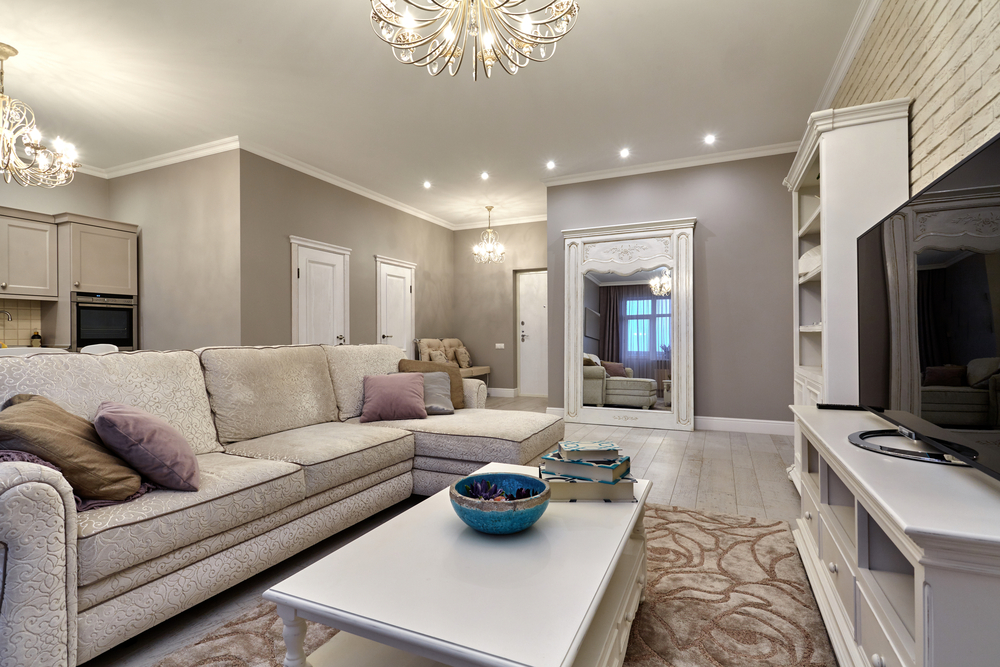
4 Ways To Use Color in Staging Your Home
Staging is a popular selling tool for homeowners everywhere getting ready to list their property. No matter what the current climate of the real estate market, getting your house as “sale ready” as possible can make a major impact on the final transaction. Whether you work with a professional interior designer or manage the project on your own, staging your home can boost visual appeal, attract more potential buyers, and may even influence your final selling price (in a good way), making it a must before you put your home on the market.
The best way to optimize overall return on your staging investment is to keep it simple. Whenever possible, avoid major renovations and big improvement projects. Instead, focus on the first thing buyers will look at when entering your home: color. As the largest feature in most living spaces, your walls are often the first thing would-be buyers see when entering the room. Don’t waste this invaluable chance to make a great first impression (and possibly, a sale). Get the help of professional Fort Collins painters and update your interior spaces with a fresh coat of paint for one of the most easy and inexpensive ways to get your home ready.
Choose Paint Colors That Highlight Your Home’s Possibilities
It’s important to remember that staging your home isn’t about suiting your personal tastes. To optimize results with your staging colors, choose shades that appeal to the most people possible and showcase the many design opportunities your home offers. Follow a few simple tips when using color to stage your home to ensure you pick a winner.
When incorporating color to attract a buyer, follow these tips:
1. Steer Clear Of Whites
Most people assume that the best way to attract a wide spectrum of prospective buyers is to whitewash everything. Yes, previous generations of realtors may have held on to the idea that some shade of white would deliver universal appeal. However, this is no longer the case. White, in all its bland glory, tends to dilute other features and accents in an area, instantly eliminating any visual impact. Worse yet, many buyers may feel like they will have to paint all the white walls before they move in, which may actually deter a sale.
2. Create A Neutral Color Palette
While white walls may currently be out of vogue, a neutral color palette still packs a powerful aesthetic punch when trying to sell your home. Neutral tones provide a multitude of benefits. Earth hues, beiges, and grays all create an excellent backdrop for any of the additional accent colors you will add in later staging phases. Additionally, neutral shades transition well from one space to another and deliver a seamless flow as buyers walk through the home. Remember, neutral doesn’t automatically translate to “light.” A dark charcoal or even a deep brown tone can visually dazzle, yet still work well with any other features in the home. As you begin to narrow down your options, don’t feel you have to settle for just one color. Select 3-5 neutrals that complement each other to help create a cohesive, visual color story for your entire interior.

3. Establish Color Balance
Creating a killer color palette isn’t enough when staging your home. It’s also important to deliver visual balance with all of the colors in any given space. Many interior designers suggest incorporating a 60-30-10 rule to ensure no one shade completely overwhelms an area. According to this concept, 60% of the room should be your dominant color (wall paint). You should then cover 30% of your room with a secondary color; this can include bigger features like carpets, drapes, and bed covers. Finally, accent the remaining 10% with fun, bright, and bold pops of color using accessories like artwork, pillows, and throws.
Bonus Tip: Even though accents only take up 10% of your room, you should still strategically place them throughout the space to evenly disburse their impact.
4. Eliminate Color Conflict
You’ve updated each room with a fresh new paint color, you’ve added your secondary shade, and you’ve carefully placed your accent pieces. Now what? Give each of your rooms a final once through to pinpoint items that aren’t enhancing your space. Even something as seemingly innocuous as a small, but brightly colored, picture frame can instantly distract from your theme and introduce a sense of “color conflict” to an area. Pack up, donate, or recycle anything that interrupts the flow of your room (or simply looks out of place or dated) to ensure nothing distracts would-be buyers from envisioning themselves as the new owners of your newly-painted, freshly-staged home.

